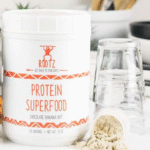Introduction
In today’s world, sugar is omnipresent, hidden in countless processed foods and beverages. While a small amount of sugar can be part of a balanced diet, excessive consumption can lead to numerous health issues, including weight gain, diabetes, and heart disease. This article provides practical strategies for reducing sugar intake, helping you to make healthier choices and improve your overall well-being.
Understanding Sugar and Its Impact
Before diving into reduction strategies, it’s crucial to understand the different types of Sugar Intake and their effects on your body:
- Natural Sugars: Found in fruits, vegetables, and dairy. These come with essential nutrients and are generally healthier.
- Added Sugars: These are sugars added to foods and drinks during processing or preparation. They provide empty calories with little to no nutritional value.
- Refined Sugars: Highly processed sugars, such as white sugar and high-fructose corn syrup, that can spike blood sugar levels and contribute to health issues.
1. Identify Hidden Sources of Sugar
One of the first steps in reducing sugar intake is identifying where it’s lurking in your diet. Many foods contain added sugars that are not immediately obvious. Check ingredient lists for terms like:
- Sucrose
- High-fructose corn syrup
- Agave nectar
- Maple syrup
- Honey
Even items labeled as “healthy” or “natural,” such as granola bars or yogurt, can be high in added sugars.
2. Read Nutrition Labels Carefully
Learning to read nutrition labels can help you make better choices. Pay attention to:
- Total Sugars: This includes both natural and added sugars.
- Added Sugars: This specific section will tell you how much sugar has been added to the product.
- Serving Size: Compare the serving size to how much you actually consume to understand your intake.
Choose Whole Foods Over Processed Foods
Whole foods are less likely to contain added sugars. Opt for:
- Fresh Fruits and Vegetables: These provide natural sugars along with fiber, vitamins, and minerals.
- Whole Grains: Brown rice, oats, and whole wheat are less processed and often contain less added sugar.
- Lean Proteins: Sources like chicken, fish, and legumes are naturally free from added sugars.
Swap Sugary Drinks for Healthier Alternatives
Sugary drinks are a major source of added sugars. Reduce or eliminate:
- Sodas: Replace with sparkling water or flavored water with a splash of citrus.
- Fruit Juices: Opt for whole fruits instead; they contain fiber and less sugar.
- Energy Drinks: Try herbal teas or plain water for hydration and energy.
Reduce Sugar in Recipes
When cooking or baking at home, you can often cut down on sugar without sacrificing flavor. Consider these tips:
- Use Less Sugar: Start by reducing the amount of sugar in recipes by 25-50%.
- Substitute with Spices: Cinnamon, vanilla extract, or nutmeg can add sweetness without extra calories.
- Experiment with Natural Sweeteners: Stevia, monk fruit, or erythritol are lower-calorie alternatives.
Gradually Reduce Sugar Intake
Making sudden changes can be challenging. Gradually cutting back on sugar can help your taste buds adjust. Try:
- Slow Reduction: Cut out one sugary item at a time or reduce the sugar in your coffee or tea gradually.
- Mindful Eating: Focus on the taste of less sweet foods to adjust your palate over time.
Choose Low-Sugar or No-Sugar Alternatives
Many food products offer low-sugar or no-sugar versions. Look for:
- Low-Sugar Yogurts: Opt for plain Greek yogurt and add fresh fruit for natural sweetness.
- No-Sugar-Added Condiments: Check for healthier versions of ketchup, salad dressings, and sauces.
Satisfy Sweet Cravings with Healthy Snacks
When cravings hit, choose healthier options:
- Fruit: Fresh or dried fruit (without added sugar) can be a satisfying alternative.
- Nuts and Seeds: These provide a crunchy texture and natural sweetness.
- Dark Chocolate: Choose chocolate with at least 70% cocoa for a lower sugar content.
Be Aware of Sugar in Restaurant Foods
Eating out can be tricky, as many restaurant dishes contain hidden sugars. To minimize sugar intake:
- Ask for Sauces on the Side: Many sauces are high in sugar.
- Choose Grilled or Baked Options: These are often lower in sugar compared to fried or breaded items.
- Request Modifications: Ask for dressings or sauces to be served on the side or omitted.
Monitor and Adjust Your Approach
Keep track of your sugar and how it affects your health. Use tools such as:
- Food Diaries: Record what you eat and drink to identify patterns and sources of added sugars.
- Apps: Nutrition tracking apps can help monitor your intake and offer healthier alternatives.
Conclusion
Implementing these strategies will not only help you cut down on sugar but also encourage a healthier lifestyle overall. Remember, making small, manageable changes can lead to significant improvements in your health.










